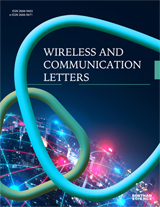Abstract
In the current scenario of automation and digitization, sensors are available
in almost all fields of invention. Sensors are in our phones, workplaces, automobiles,
and the environment. With the increasing growth of sensors, sensor networks are a
significant aspect of the Internet of things (IoT) and the contemporary world. In a
sensor network comprising multiple sensor nodes, each sensor node is small in size,
lightweight, and portable, as are the detection stations that make up the network.
Detecting and processing nodes that have been constructed are used for sensing and
processing the surrounding environment, as well as relaying the detected data to the
other nodes in the network. Almost every sensor node in the network is equipped with
four primary components, i.e., a transducer, a microcontroller, a transmitter, and a
power supply. Sensor nodes in the sensory network must be able to operate on
restricted and tiny sources of energy, which are often available in the form of
operational battery power. These types of networks also incorporate a variety of
antennas, which help to increase the network's capacity while also increasing the
transmission range, improving spatial reuse, and reducing interference. The primary
goal of this chapter is to provide an overview of the sensors and antennas used in
wireless sensor network applications.
Keywords: Antenna, Energy, Network application, Sensor, Smart network, Wireless sensor network.






















